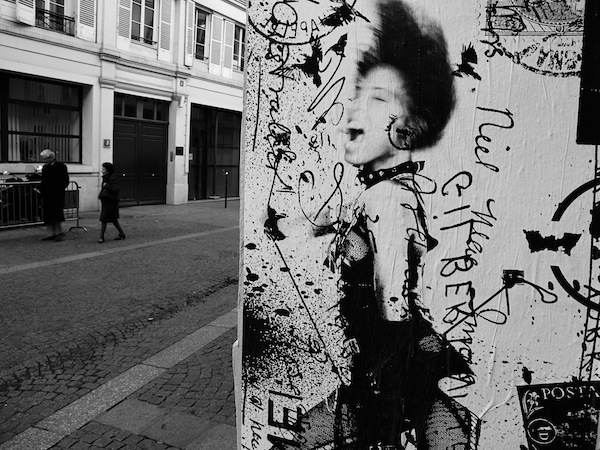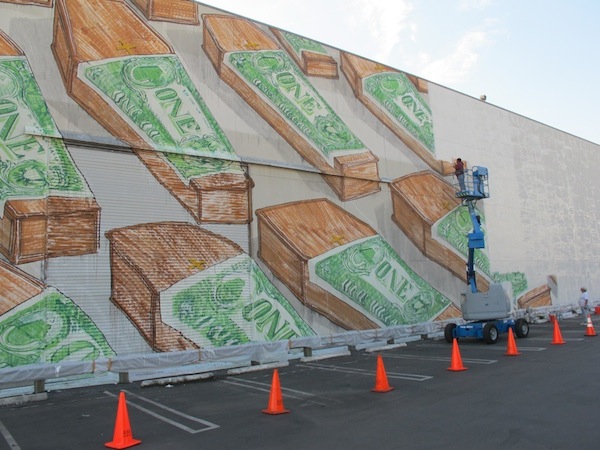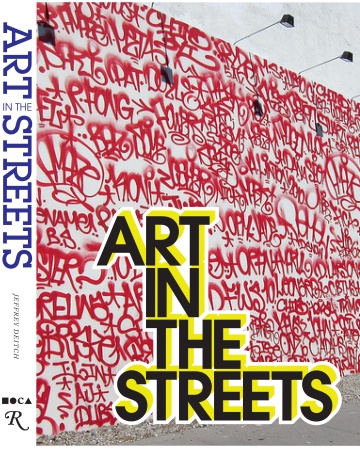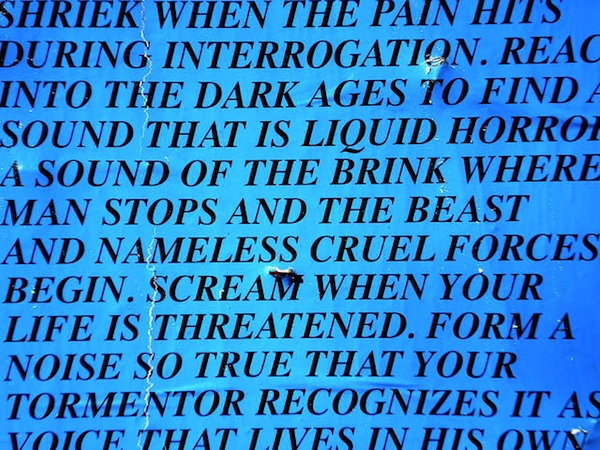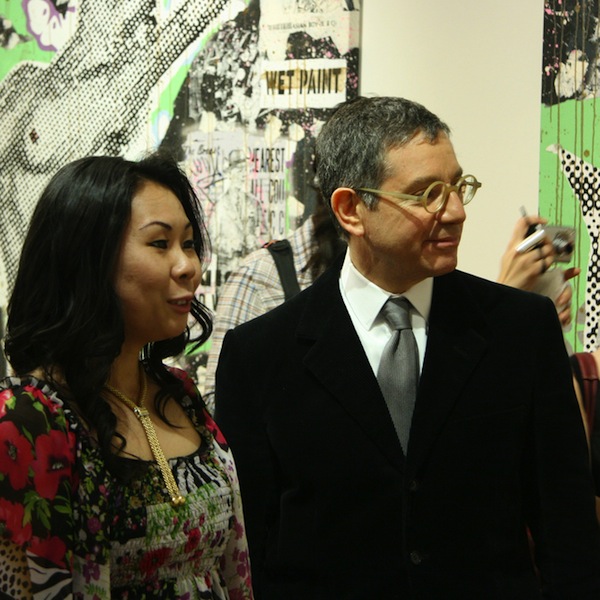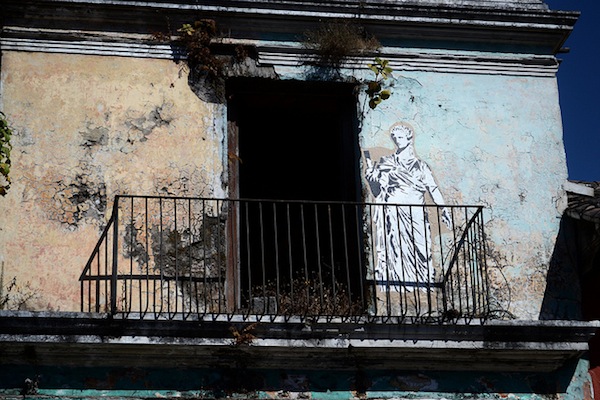
Well I’ve been back in London for about a week now, and I am beginning to understand why people think it’s so grey. When you live here, you get used to it, but wow I’ve only been away for a few months and already I think the constant greyness is annoying. Still, it’s good to be home. Here’s what the world has been up to while I’ve been watching it rain.
- A group of artists protested the removal of Blu’s mural outside of MOCA this week by projecting images onto the buffed wall. Here’s a news story and a video.
- José Parlá has a new book coming out and a solo show in New York next month. Arrested Motion has more info on both those things and the book is currently available online.
- Dimitris Taxis does some great wheatpastes.
- King Adz has put together a show opening this weekend in Ireland with Blek le Rat, Asbestos, Laser 3.14 and others.
- Kyle Chayka went on a bit of a rant about Banksy’s possible Oscar nomination, but he makes some good points.
- Also on the topic of Exit Through The Gift Shop, the NYTimes is reporting that a man who has come forward as an original editor of Mr. Brainwash’s film Life Remote Control wants some credit for making the film that eventually sort of morphed into Exit.
- Carolina A. Miranda wrote the latest cover article for the magazine ARTnews about the future of street art and it moving away from figurative work. You can read the entire article online. On the one hand, a move away from pop-art and figurative art seems to be counter-productive to the “art for the people” ethos at the core of so much street art, but it’s also certainly easier to turn a pop-art image into a marketing campaign while an abstract painting may do a better job of brightening up a grey wall without the artist and the viewer immediately thinking of dollar signs. I think street artists will just have to be careful to not become so conceptual that the possibility for people to understand or appreciate the art on some level without an artist’s statement is lost.
- Some graffiti writers are tagging up ancient rock art sites in Nevada.
- Mat Gleason named Banksy and Shepard Fairey among the top overrated artists of the decade. Check out this video for why Gleason thinks that Shepard isn’t an artist!
- A mural by Shepard Fairey was partially painted over in LA by some other artists/writers. No big deal right? Happens all the time, right? Wrong, apparently. The mural was painted over by another artist showing at a gallery nearby. According to JetSetGraffiti, the artist has since apologized and will be paying for Shepard to repair the wall with a new mural. Okay, so should that mural still be there untouched? Maybe. Sounds like the local neighborhood liked it. Can it suck when things get dissed or buffed or written over accidentally or whatever else? Yeah. Should the artist have to pay for damages? Hell no! That’s the sort of thing that happens when you get arrested by the police for graffiti or street art, not something that art lovers should impose upon each other. The mural didn’t last forever. That’s the nature of street art. It sucks sometimes and there are ways to deal with it, but don’t make the vandal pay for damages!
- NBC has done a really disturbing promotion in NYC’s parks for their new superhero show. Publicadcampaign explains.
Photo by Not Another Street Artist

